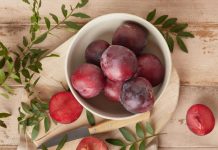
In a new study, researchers found certain human gut microbes thrive when fed specific types of ingredients in dietary fibers.
The research was conducted by a team from Washington University School of Medicine in St. Louis.
Dietary fiber is known to promote health, but typical Western diets are lacking in high-fiber fruits, vegetables, whole grains, and legumes.
Fibers contain very diverse and complex collections of molecules.
The specific components of various fibers that are used by gut bacteria and confer health benefits are generally not known.
Since the human genome possesses a very limited arsenal of genes that break down dietary fiber, and many gut bacterial species are chock full of these genes, people depend on gut microbes to digest fiber.
In the study, the team aimed to understand which types of fiber promote the representation of different types of beneficial microbes in the human gut, and the nature of their active ingredients.
They screened 34 types of fiber provided by the food company Mondelez International.
Their list included fibers often discarded during food manufacturing, such as fruit and vegetable peels and grain husks.
The work was conducted in mice colonized with human gut bacteria and using new technologies for measuring nutrient processing.
They focused on food-grade fibers that selectively affected different species belonging to a group of bacteria known as Bacteroides.
The team found that in pea fiber, the active molecular constituents included a type of polysaccharide called arabinan, whereas in citrus pectin recovered from orange peels, another type of polysaccharide called homogalacturonan was responsible for the expansion of the bacteria.
Understanding these relationships is important for developing foods that are optimally processed by different microbial populations that live together in the gut.
The team says their findings could help food scientists develop methods for producing more nutritious foods containing different combinations of health-promoting bioactive fiber components.
The lead author of the study is Jeffrey I. Gordon, MD.
The study is published in the journal Cell.
Copyright © 2019 Knowridge Science Report. All rights reserved.



